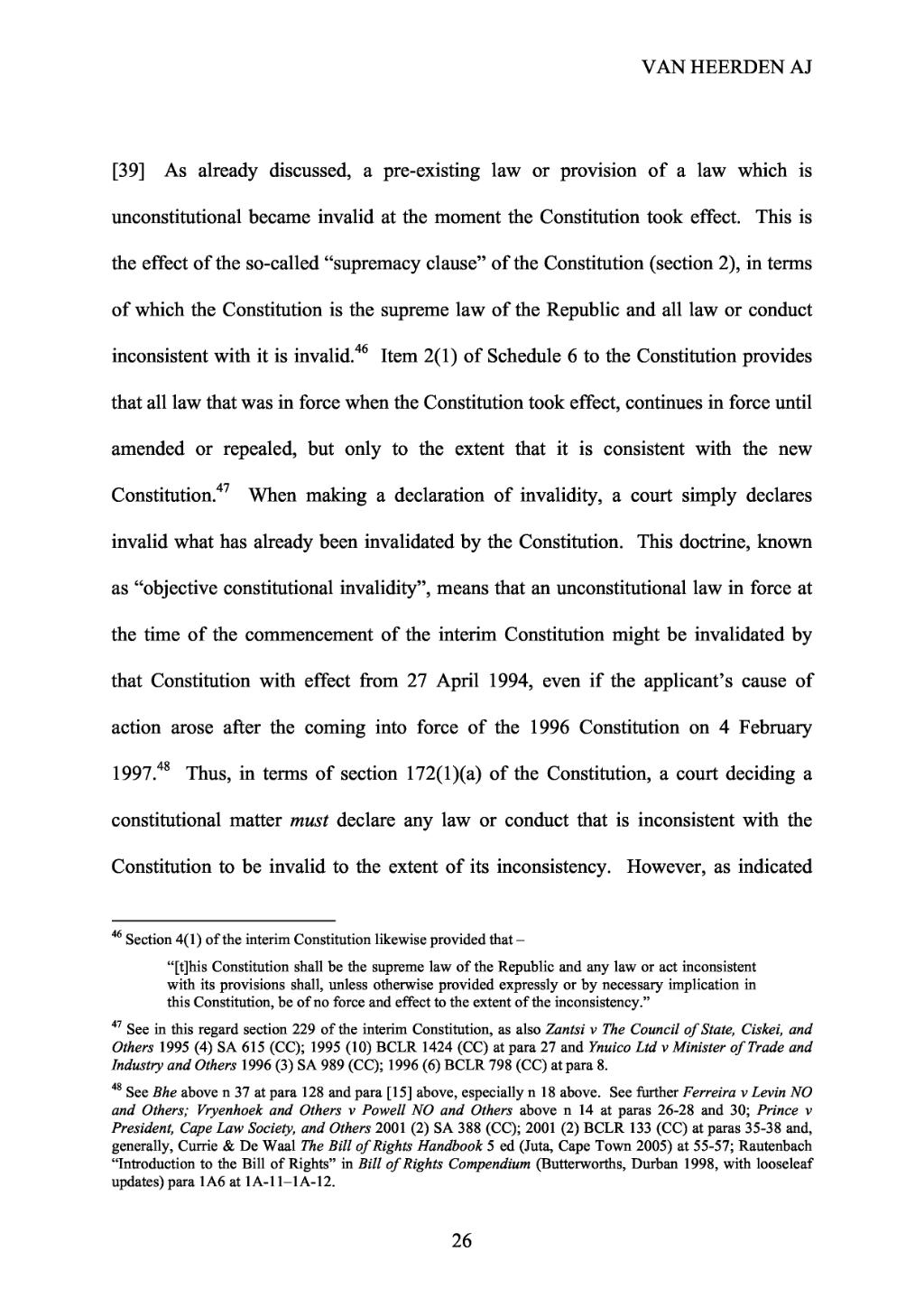Van Heerden AJ
[39] As already discussed, a pre-existing law or provision of a law which is unconstitutional became invalid at the moment the Constitution took effect. This is the effect of the so-called “supremacy clause” of the Constitution (section 2), in terms of which the Constitution is the supreme law of the Republic and all law or conduct inconsistent with it is invalid.[1] Item 2(1) of Schedule 6 to the Constitution provides that all law that was in force when the Constitution took effect, continues in force until amended or repealed, but only to the extent that it is consistent with the new Constitution.[2] When making a declaration of invalidity, a court simply declares invalid what has already been invalidated by the Constitution. This doctrine, known as “objective constitutional invalidity”, means that an unconstitutional law in force at the time of the commencement of the interim Constitution might be invalidated by that Constitution with effect from 27 April 1994, even if the applicant’s cause of action arose after the coming into force of the 1996 Constitution on 4 February 1997.[3] Thus, in terms of section 172(1)(a) of the Constitution, a court deciding a constitutional matter must declare any law or conduct that is inconsistent with the Constitution to be invalid to the extent of its inconsistency. However, as indicated
- ↑ Section 4(1) of the interim Constitution likewise provided that –
“[t]his Constitution shall be the supreme law of the Republic and any law or act inconsistent with its provisions shall, unless otherwise provided expressly or by necessary implication in this Constitution, be of no force and effect to the extent of the inconsistency.”
- ↑ See in this regard section 229 of the interim Constitution, as also Zantsi v The Council of State, Ciskei, and Others 1995 (4) SA 615 (CC); 1995 (10) BCLR 1424 (CC) at para 27 and Ynuico Ltd v Minister of Trade and Industry and Others 1996 (3) SA 989 (CC); 1996 (6) BCLR 798 (CC) at para 8.
- ↑ See Bhe above n 37 at para 128 and para [15] above, especially n 18 above. See further Ferreira v Levin NO and Others; Vryenhoek and Others v Powell NO and Others above n 14 at paras 26–28 and 30; Prince v President, Cape Law Society, and Others 2001 (2) SA 388 (CC); 2001 (2) BCLR 133 (CC) at paras 35–38 and, generally, Currie & De Waal The Bill of Rights Handbook 5 ed (Juta, Cape Town 2005) at 55–57; Rautenbach “Introduction to the Bill of Rights” in Bill of Rights Compendium (Butterworths, Durban 1998, with looseleaf updates) para 1A6 at 1A-11–1A-12.
26
